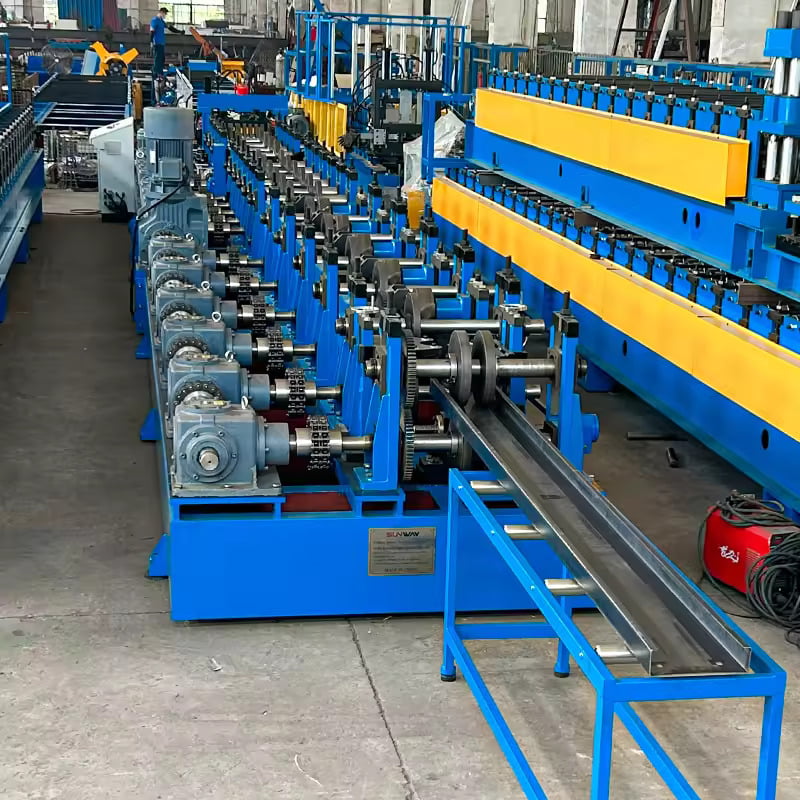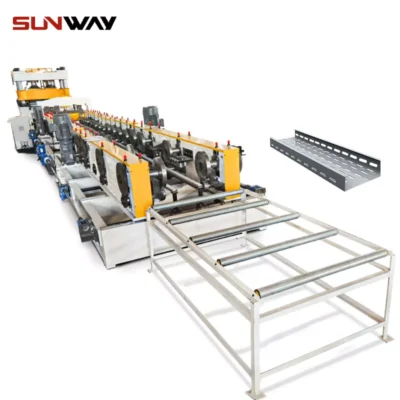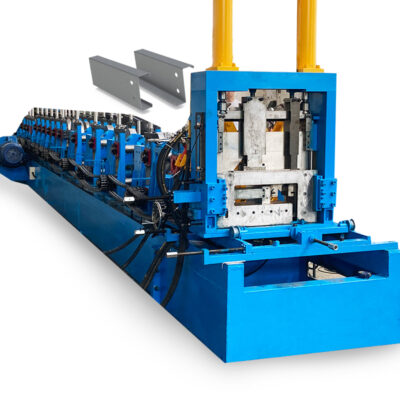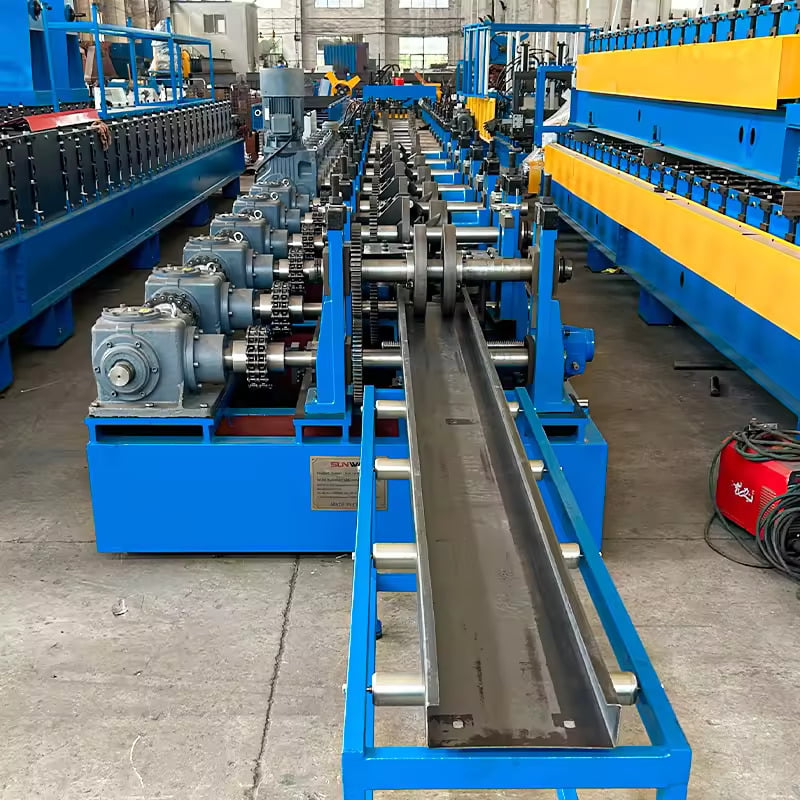When it comes to construction projects, particularly those involving concrete slabs, few materials are as crucial as metal decking for concrete. It might not seem glamorous, but metal decking is one of the unsung heroes that keeps buildings sturdy and safe. Whether you’re working on a commercial structure, high-rise building, or even a parking deck, metal decking offers the strength and durability required to create reinforced concrete slabs with ease.
This guide delves into every aspect of metal decking for concrete. We’ll break down different types, walk you through the working process, key components, machine efficiencies, and more. Plus, you’ll learn how to choose the right supplier, weigh the pros and cons, and avoid common pitfalls in metal decking projects.

What is Metal Decking for Concrete?
Metal decking for concrete refers to the corrugated sheet metal that serves as a structural component in reinforced concrete slabs. It’s widely used in construction because of its ability to act as a permanent formwork and a reinforcement component for concrete slabs. Essentially, the decking acts as a mold or base where concrete is poured, and it provides added strength, reducing the need for traditional formwork and additional reinforcement materials.
Presenting the Role of Corrugated Metal Sheets in Construction
The use of corrugated metal sheets in construction is widespread, especially in the reinforcement of concrete. These sheets aren’t just for looks. They play a crucial role in supporting loads during the construction process and distributing them evenly throughout the structure.
Think of the corrugated shape of the metal sheets as nature’s way of maximizing strength. Similar to the way a piece of paper folded like an accordion holds more weight, the grooves in corrugated metal give it more strength and stability. But that’s just the beginning. Let’s explore why metal decking is such a game-changer for concrete work.
Overview of Metal Decking for Concrete Types
Metal decking comes in various models, each designed to meet specific needs. Below is a comprehensive table of metal decking types, outlining their key features and applications in the industry.
| Type of Metal Decking | Description | Best Used For | Key Features |
|---|---|---|---|
| Composite Metal Decking | This type of decking is designed to bond with concrete, offering additional strength to the slab. | Multi-story buildings, offices, and parking decks | Creates a stronger bond with concrete, reduces the need for additional reinforcement |
| Form Decking | Primarily used as a form for concrete slabs without any reinforcement. | Temporary applications or projects where reinforcement isn’t required | Cost-effective, ideal for non-permanent solutions |
| Cellular Decking | Features a bottom sheet to hide mechanical and electrical services within the floor system. | Commercial buildings where aesthetic is important | Provides a cleaner ceiling finish, hides utilities |
| Corrugated Metal Decking | Basic corrugated sheets used in construction for concrete reinforcement. | Industrial and commercial buildings | Strong, lightweight, cost-effective |
| Composite Cellular Decking | Combines composite and cellular decking properties. | Large scale buildings, high traffic areas | Provides strength and utility management in one product |
| Non-Composite Form Deck | Used when the concrete slab doesn’t require metal decking for reinforcement. | Roof decking | Lightweight, low-cost |
| Punch Decking | Perforated decking allows for better sound absorption. | Auditoriums, theaters, or office spaces | Improves acoustics, lightweight |
| Acoustic Metal Decking | Designed to absorb sound. | Stadiums, arenas, concert venues | Reduces echo and reverberation |
| Long-span Decking | Made to cover large spans without support. | Warehouses, airports | Reduces the need for supporting beams |
| High-Strength Decking | Specifically designed for heavy-duty applications. | Industrial buildings, heavy-load structures | Can withstand extreme loads |
Choosing the Right Type for Your Project
So, which metal decking is right for your project? Well, it depends on your needs. If you’re working on a multi-story building, composite decking offers durability and added strength compared to form decking. On the other hand, cellular decking is perfect if aesthetics are important, like in high-end commercial buildings where you want to hide utilities.
How Does Metal Decking for Concrete Work?
Understanding how metal decking works is essential for making the right choice. Here’s a simple breakdown of the working process of metal decking for concrete:
- Installation: First, the metal decking is laid out across steel beams or other supporting structures. The decking is usually fastened using mechanical attachments like screws or welding studs to ensure stability during the pouring of concrete.
- Reinforcement: After securing the metal decking, reinforcement bars (rebar) or mesh are often placed on top of the deck. This step provides additional structural integrity to the slab.
- Pouring the Concrete: Next, wet concrete is poured over the decking. The decking acts as a mold or form for the concrete, holding it in place as it hardens.
- Composite Action: As the concrete hardens, it binds to the ridges in the metal decking, forming a composite slab. This system utilizes the strengths of both materials: the compressive strength of concrete and the tensile strength of steel.
- Curing Process: After the concrete sets, the composite slab continues to cure, gaining strength over time. The decking remains in place, serving as a permanent structural component.
-
 Vineyard Post Roll Forming Machine
Vineyard Post Roll Forming Machine -
 Auto Size Changeable Sigma Purlin Roll Forming Machine
Auto Size Changeable Sigma Purlin Roll Forming Machine -
 Electrical Cabinet Frame Roll Forming Machine
Electrical Cabinet Frame Roll Forming Machine -
 Din Rail Roll Forming Machine
Din Rail Roll Forming Machine -
 Cable Ladder Roll Forming Machine
Cable Ladder Roll Forming Machine -
 PV Mounting Bracket C Shape Profile Roll Forming Machine
PV Mounting Bracket C Shape Profile Roll Forming Machine -
 Cable Tray Roll Forming Machine
Cable Tray Roll Forming Machine -
 C Z Purlin Channel Cold Roll Forming Machine Full Auto Galvanized Steel Profile
C Z Purlin Channel Cold Roll Forming Machine Full Auto Galvanized Steel Profile -
 PV Mounting Bracket Roll Forming Machine (HAT / Omega Profile)
PV Mounting Bracket Roll Forming Machine (HAT / Omega Profile)
Key Components and Their Functions
Each component of a metal decking system serves a vital role. Below is a table outlining the key components and their functions.
| Component | Function |
|---|---|
| Metal Deck Sheets | Serve as the base form for pouring concrete and provide structural support. |
| Shear Connectors | Ensure that the metal deck and concrete act together as one composite unit. |
| Reinforcement Bars | Strengthen the concrete slab, preventing cracks and increasing tensile strength. |
| Fasteners (Screws/Welding Studs) | Secure the metal decking to steel beams and hold the structure in place during concrete pouring. |
| Support Beams | Provide the framework on which the decking rests and offer additional load-bearing capacity. |
Machine Speed and Efficiency in Metal Decking Production
Modern construction projects demand fast and efficient metal decking installation to keep up with deadlines. Machine speed and efficiency play a crucial role in this. Here’s a breakdown of how different machines contribute to decking production:
| Machine Type | Speed (Sheets/hour) | Efficiency |
|---|---|---|
| Roll Forming Machines | 30–60 sheets per hour | High precision, fast setup time, customizable deck profiles |
| Cut-to-Length Machines | 40–80 sheets per hour | Highly efficient for high-volume projects, minimizes waste |
| Deck Installation Machines | 20–50 sheets per hour | Ensures even installation and correct fastening of sheets |
Roll forming machines, for example, are known for their speed and precision, creating metal deck profiles at a faster rate compared to manual processes. These machines are ideal for large construction projects that require high-volume production.
Customized Mechanical Parameters for Metal Decking
Customization in metal decking allows projects to meet unique engineering specifications. Below is a table of customized mechanical parameters that can be adjusted for different projects.
| Parameter | Range | Purpose |
|---|---|---|
| Deck Thickness | 0.75 mm – 1.5 mm | Adjusts strength and weight load capacity |
| Span Capacity | 3 m – 6 m | Defines the distance that metal decking can cover between supports |
| Weight Capacity | 500 kg/m² – 1500 kg/m² | Indicates the load the decking can bear |
| Profile Depth | 50 mm – 100 mm | Affects the bonding and stiffness of the decking with concrete |
| Finish Type | Galvanized, Painted, Coated | Provides rust resistance and aesthetic finish |
Different thicknesses and spans allow for variations in strength and support, ensuring that each project is designed to meet specific load requirements and architectural needs.
Applications of Metal Decking for Concrete
Now that you know how metal decking works, it’s important to understand its wide range of applications. Below is a table showcasing where metal decking is commonly used and why it’s chosen for those particular areas.
| Application | Why Metal Decking is Used |
|---|---|
| High-Rise Buildings | Strong, durable, and lightweight, reducing the need for extra beams or support. |
| Parking Decks | Supports heavy loads from vehicles, while being quick to install. |
| Commercial Buildings | Allows for long-span designs, creating open spaces without additional columns. |
| Warehouses | Offers high weight-bearing capacity and durability in large spaces. |
| Bridges | Provides a lightweight yet strong base for concrete. |
| Residential Buildings | Cost-effective and allows for faster construction timelines. |
Installation, Operation, and Maintenance of Metal Decking for Concrete
A solid understanding of installation, operation, and maintenance will keep your decking system in top shape. Here’s how to get the best performance from your metal decking system.
| Stage |
| Installation |
| Operation |
| Maintenance |
Suppliers and Price Range for Metal Decking for Concrete
The price of metal decking varies depending on material thickness, profile, and supplier. Below is a guide to suppliers and pricing to help you make an informed decision.
| Supplier | Price Range (per sq. ft.) | Location |
|---|---|---|
| ABC Decking | $5.50 – $8.00 | Nationwide US |
| XYZ Construction Metals | $4.75 – $7.25 | Europe and US |
| BuildMaster Decking | $6.00 – $9.00 | Asia and US |
| MetalWorks Supply | $5.00 – $7.75 | Global |
| Decking Pros Inc. | $5.25 – $7.50 | North America |
How to Choose the Right Metal Decking Supplier
When selecting a metal decking supplier, several factors must be considered. Here’s how to make the best choice:
| Factor | What to Consider |
|---|---|
| Pricing | Compare prices between multiple suppliers, but don’t sacrifice quality for cost. |
| Lead Time | Ensure the supplier can meet your project’s timeline. Some suppliers offer faster turnaround than others. |
| Customization Options | Can the supplier offer custom profiles, thicknesses, or finishes? |
| Customer Support | Reliable customer service is important for addressing any issues or questions. |
| Reputation | Check reviews and case studies of the supplier’s previous projects to assess their quality. |
Advantages and Disadvantages of Metal Decking for Concrete
Every product has its advantages and disadvantages, and metal decking for concrete is no exception. Here’s a comparison to help you understand its strengths and limitations.
| Advantages | Disadvantages |
|---|---|
| Lightweight and easy to install | Initial cost is higher than traditional formwork |
| Reduces the need for additional reinforcement | Susceptible to corrosion if not properly coated |
| Allows for faster construction | Requires regular maintenance and inspection |
| Can span long distances, reducing the need for columns | Limited design options for highly customized projects |
| Provides a clean, finished look to ceilings | May require additional temporary supports during concrete curing |

FAQs
| Question | Answer |
|---|---|
| What is the lifespan of metal decking for concrete? | When properly installed and maintained, metal decking can last over 50 years. |
| Does metal decking for concrete require any maintenance? | Yes, regular inspections should be conducted to check for corrosion and structural integrity. |
| Can metal decking be used in residential projects? | Absolutely! It’s cost-effective and reduces construction time for residential buildings. |
| How thick should my metal decking be? | It depends on your load requirements. Typically, 0.75 mm to 1.5 mm thicknesses are used. |
| Is metal decking fire-resistant? | Metal decking itself is not fireproof, but it can be coated with fire-resistant materials to improve safety. |
Conclusion
Metal decking for concrete plays an integral role in modern construction. It offers a combination of strength, efficiency, and durability that makes it ideal for reinforcing concrete slabs in various applications, from high-rise buildings to bridges. By choosing the right type of decking, understanding its working process, and selecting a reputable supplier, you can ensure the success of your construction project.
